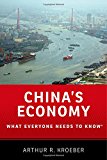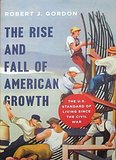Enter your mobile number or email address below and we'll send you a link to download the free Kindle App. Then you can start reading Kindle books on your smartphone, tablet, or computer - no Kindle device required.
-
Apple

-
Android

-
Windows Phone

-
Android

To get the free app, enter your email address or mobile phone number.







The China Boom: Why China Will Not Rule the World (Contemporary Asia in the World) Hardcover – October 20, 2015
Frequently Bought Together
Customers Who Bought This Item Also Bought
Editorial Reviews
Review
[An] informative study.... [The China Boom] paints a convincing picture that China may not be the superpower many predicted it to be.
(Publishers Weekly)This valuable treatise will appeal to both scholars and more casual readers with an interest in China.
(Library Journal)Masterful.
(Foreign Affairs)It is a fast-paced, highly readable, thoroughly provocative, and (rare for an academic book) truly enjoyable account of 400 years of Chinese economic history right up to the present day.
(Asian Review of Books)Review
A very readable and informative book that will find a wide readership. Its great strength is that it shows on many different fronts that the notion of China's rising dominance may be unrealistic or, at least, premature.
(Victor Shih, University of California, San Diego)Timely and important, Ho-fung Hung's accessible and clear-eyed assessment of China's prospects, rooted in both the longer patterns of China's own history and global economics, reaches unexpected and reassuring conclusions. A stimulating intellectual journey led by a calm and judicious guide.
(Robert A. Kapp, former president of the U.S.-China Business Council)Ho-Fung Hung's important and stimulating work places China's recent economic reforms and development trajectory firmly within their proper historical context, thereby releasing them from triumphalist or defeatist narratives that begin in 1949 or 1978. The China of the past four decades, Hung shows us, is the same China that has wrestled with modernization since the early Qing Dynasty and has faced the same problems many times before.
(Michael Pettis, Peking University)Ho-fung Hung's brilliant analysis of the intertwining of China's national trajectory with the evolution of global capitalism adds new energy and insights to one of the most fundamental debates in contemporary political economy.
(Peter Evans, University of California, Berkeley)Don't have a Kindle? Get your Kindle here, or download a FREE Kindle Reading App.
Product Details
Would you like to update product info or give feedback on images?
|
Set up an Amazon Giveaway













